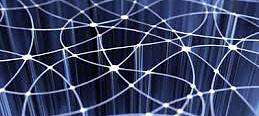Speaker
Dr
Jonathan Weintroub
(Harvard-Smithsonian Center for Astrophysics)
Description
A broad international collaboration is building the Event Horizon Telescope (EHT). The aim is to test Einstein’s theory of General Relativity in one of the very few places it could break down: the strong gravity regime right at the edge of a black hole. The EHT is an earth-size VLBI array operating at the shortest radio wavelengths, that has achieved unprecedented angular resolution of a few tens of micro-arcseconds. For nearby super massive black holes (SMBH) this size scale is comparable to the Schwarzschild Radius, and emission in the immediate neighborhood of the event horizon can be directly observed.
In 2007 the EHT detected SgrA*, the SMBH at the Milky Way’s center, on event-horizon scales. Three VLBI stations were located on Mauna Kea, Hawaii, Cedar Flat, California, and Mount Graham, Arizona. Subsequent observations have used larger collecting areas, greater bandwidth, and additional stations forming more and longer baselines. These developments have improved sensitivity, resolution and imaging power. The EHT has detected the base of the jet powered by the SMBH in the galaxy Messier 87 (Virgo A), and, most recently, dual polarization VLBI has probed magnetic fields on event-horizon scales.
Digital signal processing (DSP) technology from the Collaboration for Astronomy Signal Processing and Electronics Research (CASPER) have been key to the success of the EHT throughout. Single dish digital back ends, and multi-dish phased arrays have used successive generations of CASPER platforms, including iBOB, BEE2, ROACH1 and ROACH2. I will summarize the ground breaking science results obtained with the CASPER-enabled EHT, and outline future technical developments, with emphasis on the secret sauce of CASPER DSP.
for the Event Horizon Telescope Collaboration
http://eventhorizontelescope.org/
Primary author
Dr
Jonathan Weintroub
(Harvard-Smithsonian Center for Astrophysics)

